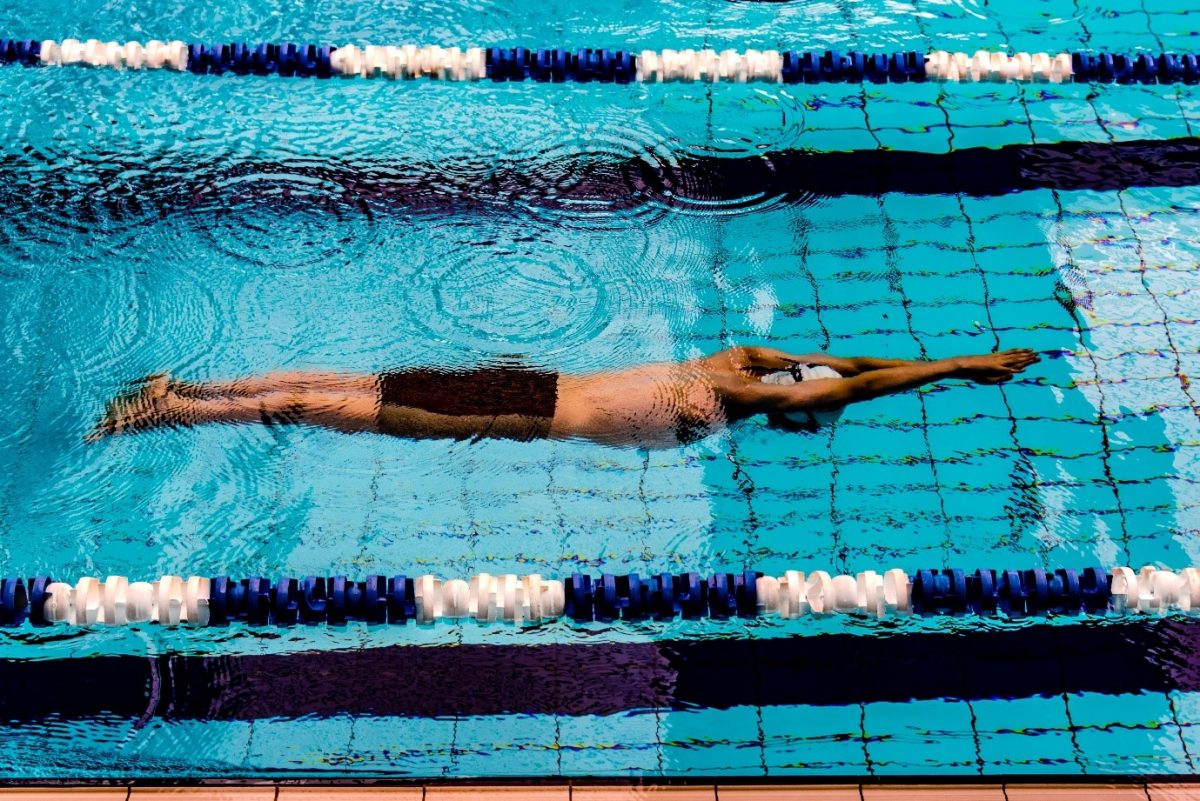You hear about the “glide phase” again and again. What exactly is it all about? Which swimmers benefit, who is better off leaving it alone?
Gliding brings a micro-recovery
Anyone who has attended a swim course or studied literature on the perfect stroke technique has certainly encountered it: the glide phase. What is of central importance in cross-country skiing or even inline skating also works in the water. A powerful push-off accelerates the body in such a way that it subsequently glides a few meters in its element without any additional effort. In freestyle swimming, the glide phase corresponds to the duration that one arm spends just below the surface of the water in the forward extended position, while the other arm is in the recovery phase after a powerful push-off. The glide phase is terminated when the hand of the arm extended forward begins to grasp the water. The body thus floats through the water on its own, supported by the leg kick, which provides additional lift.
Unlike in cross-country skiing and inline skating, in swimming a long and effort-saving glide phase does not depend solely on the athlete’s technical ability. Rather, all the factors that give the body a high water position play a role in gliding ability. On the one hand, efficient leg strokes and arm pulls, but above all body proportions, individual fat distribution and high torso tension. But enough theory.
How does a pronounced glide phase benefit the crawl swimmer in practice? Triathlon swim coach Szilard Csoke (former competitive swimmer and triathlete; works as a professional swim coach and is founder and head coach of the Zurich swim school Swimatic) has the following opinion:
“If you are able to glide effectively, you allow your arms a micro-recovery with every stroke. At best, you’re actually saving strength, and what’s more, you’re preparing your arm to grasp the water efficiently.”
Understandably, though, (long) gliding isn’t the best solution in every case. “If you overdo it, you lose speed and need several times more energy to accelerate your body again afterwards,” the swimming coach sums up, adding, “Naturally weak gliders certainly don’t do themselves any favors by imposing such a swimming style on their bodies!” Some external factors also play a role when it comes to the question of gliding or not gliding: the distance to be swum (sprint versus long distance), the water conditions (calm pool versus moving open water) or even situational conditions in the competition (scramble at the start and at the buoy versus rhythmic water shadow swimming).
All these factors already suggest that there is no such thing as THE ideal glide phase, but it depends on many variables. It has to be adapted situationally to the circumstances.
The most obvious differences can be seen when watching world class athletes in the 50 m freestyle in the pool as well as in the open water over 5 kilometers. In the sprinter, the glide phase hardly takes place. The leg kick is executed with maximum intensity, the pull cadence is so high that the arms move almost in the rhythm of turbine wheels. The center of body rotation is in the shoulder area, which is why this type of crawl is also called “shoulder driven freestyle”. Long-distance swimmers, on the other hand, are different. They swim with a significantly lower arm pull cadence and lower leg stroke intensity in order to save as much energy as possible. The impulse for body rotation comes from the hips.
Sometimes the optimum is also a combination of glide phases of different lengths. “Triathletes, for example, often have to resort to different rhythms in a competition,” says swimming coach Szilard Csoke. “At buoys and in waves, a high cadence is needed, while in a bunch or as the race progresses, you hit a longer glide phase.” He therefore advises amateur athletes and triathlon swimmers to practice different glide rhythms in training. “That way, you’re ready for any competition situation.”
Do the self-test
Whether a swimmer can naturally manage a clearly identifiable glide phase or whether glide depends on leg stroke assistance or a thick neoprene can be found out with a simple test. After a strong push off the wall, the legs are immediately brought parallel to each other. The lateral pads of the big toes as well as (depending on the anatomical conditions) the knees touch each other, no active leg kick is executed. Anyone who now succeeds in swimming 50 m crawl-down at a steady pace has the physical prerequisites of a “glider”. Or to put it less nicely: If the legs permanently sag during this exercise, this indicates a naturally poor water position and/or insufficient torso tension.
This Blog Article was made available to us by Fit for Life. Fit for Life is the Swiss magazine for fitness, running and endurance sports. Would you like to read such articles regularly? Then Click here.

You might also be interested in these open water training tips or how to handle the mass start.
